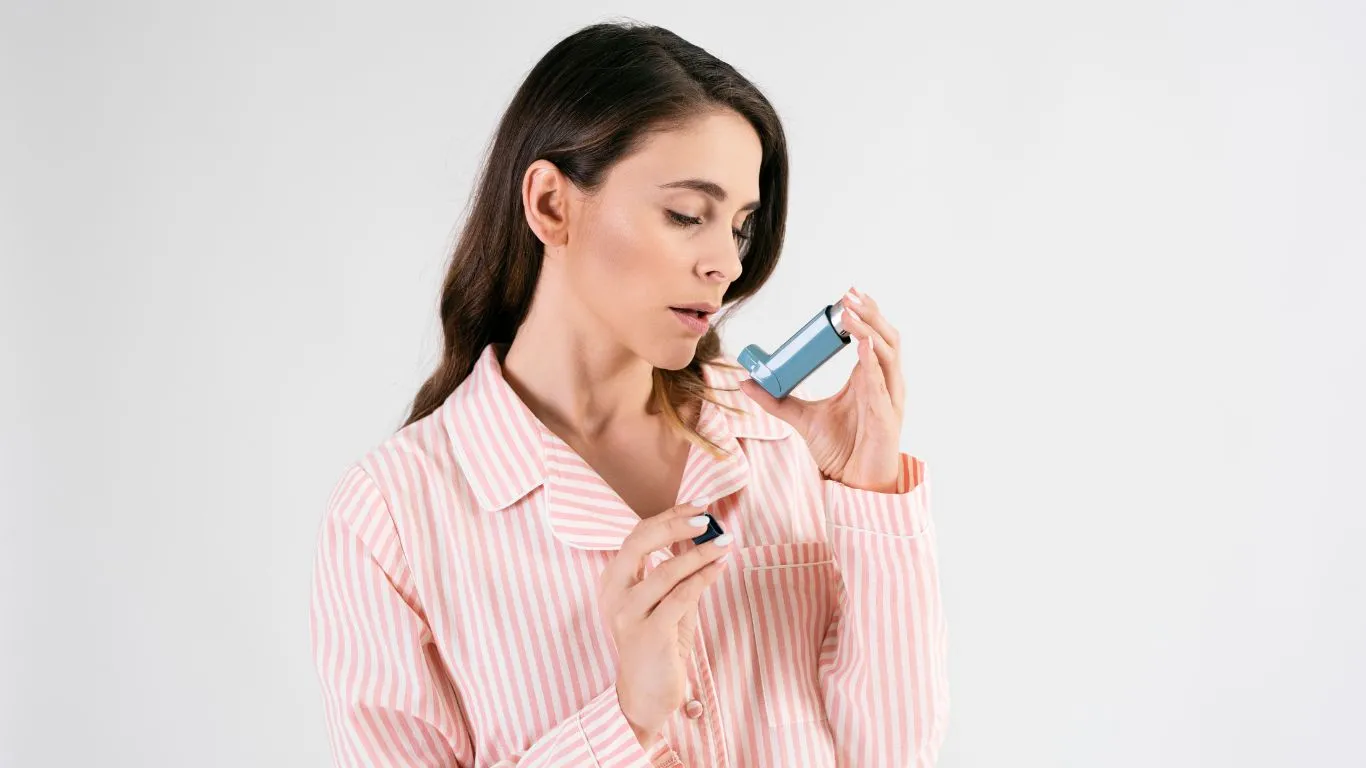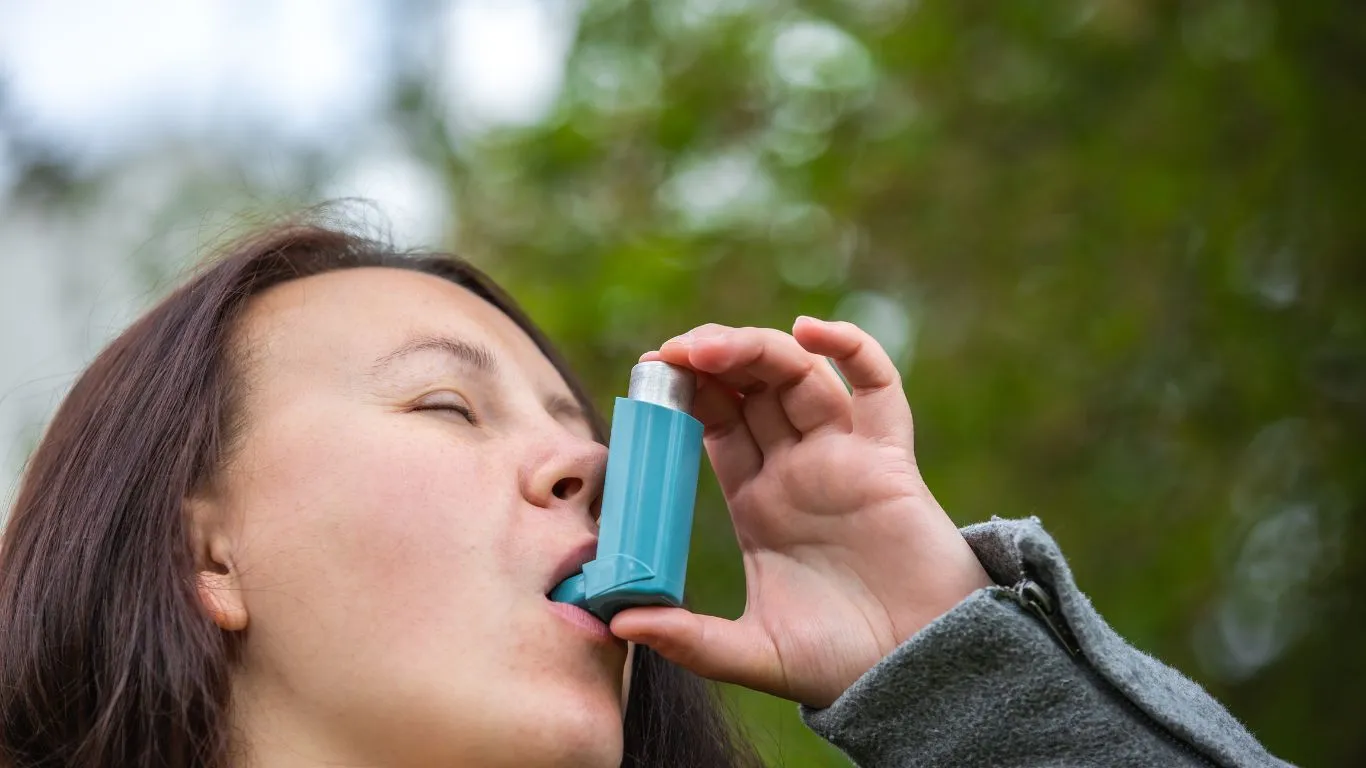10 Asthma-Friendly Home Fragrance Alternatives You’ll Love
As a Pulmonary Nurse, I’ve seen firsthand how environmental factors, like strong scents, can affect those with asthma or respiratory issues. Asthma-friendly home fragrance alternatives are not just a luxury; they’re an essential part of creating a safe, soothing environment for those who are sensitive to airborne irritants. If you’re someone who enjoys fresh scents at home but are worried about triggering asthma symptoms, you’re not alone. Many people struggle with finding a balance between creating a pleasant-smelling home and ensuring that the air is free of irritants. This article will help you explore asthma-friendly home fragrance alternatives and practical ways to fill your space with calming scents without compromising your health.
What Makes Fragrances Harmful for Asthma Sufferers?
Before we dive into asthma-friendly alternatives, it’s important to understand why traditional fragrances can be problematic for asthma patients. Most air fresheners and scented candles are loaded with chemicals that, while smelling delightful, can be harmful when inhaled. These chemicals, often found in synthetic perfumes, are known to irritate the airways, leading to coughing, wheezing, and shortness of breath. In fact, some studies have shown that exposure to artificial fragrances can exacerbate asthma symptoms or even trigger an asthma attack. As a Pulmonary Nurse, I’ve seen how even a simple spritz of an air freshener can lead to significant discomfort for those with asthma, especially if they are using traditional store-bought products filled with harmful chemicals.
The Importance of Choosing Natural Ingredients
One of the best ways to ensure that your home remains both fresh and asthma-friendly is by opting for natural fragrances. Products made with natural essential oils and plant-based ingredients are much less likely to trigger asthma symptoms. The key is choosing products that don’t contain artificial fragrances, phthalates, or other toxic additives. This can make a huge difference in the air quality of your home. But how do you know which products are safe, and what can you use to create your own asthma-friendly home fragrance alternatives?

Asthma-Friendly Home Fragrance Alternatives to Consider
Thankfully, there are many natural and safe ways to make your home smell lovely without aggravating asthma symptoms. Let’s explore some asthma-friendly home fragrance alternatives that can help you keep your space smelling fresh and soothing.
1. Essential Oils: The Go-To Natural Option
Essential oils are perhaps the most popular choice for natural home fragrances. These concentrated oils, derived from plants, offer a wide range of scents and can be used in diffusers, homemade sprays, or even DIY candles. Some essential oils, like lavender, eucalyptus, and chamomile, are known for their calming effects, making them ideal for creating a soothing atmosphere in the home. As a nurse, I recommend choosing 100% pure essential oils to avoid synthetic chemicals. You can even make your own air fresheners by diluting essential oils in water and spraying them around your home.
Lavender is a great choice for relaxation and can help reduce stress and anxiety. Eucalyptus is another fantastic option, especially for those with respiratory issues, as it has a naturally refreshing scent that can help open up airways. Just be cautious, as some essential oils may still cause sensitivities in certain individuals. Always test a small amount before using any oil extensively.
2. Beeswax Candles: A Safe, Scented Alternative
While most scented candles are off-limits for asthma sufferers, beeswax candles provide a much safer option. Unlike conventional candles, which release soot and other toxins when burned, beeswax candles are made from all-natural ingredients. They burn cleanly, purify the air, and have a natural, mild honey scent. If you love the soft glow of candles, beeswax is a perfect choice for asthma-friendly home fragrance alternatives. Not only do they provide a pleasant aroma, but they can also help reduce airborne toxins in your home.

3. Homemade Herbal Sachets and Potpourri
If you’re a fan of dry, potpourri-like fragrances, you can easily create your own asthma-friendly alternatives by using dried herbs and flowers. You can make little sachets filled with dried lavender, rosemary, or mint, or create a potpourri blend using herbs that are gentle on the respiratory system. Not only do these homemade alternatives smell amazing, but they also double as beautiful decor pieces for your home. I personally love creating my own blends and placing them in areas like my kitchen or living room, where they release a subtle, natural fragrance without any harmful side effects.
- Lavender – Relaxing and soothing, perfect for bedrooms.
- Rosemary – Energizing and refreshing, great for living areas.
- Mint – Invigorating and cooling, ideal for kitchens or bathrooms.
How to Avoid Fragrance Triggers in Your Home
While natural alternatives are a great step in the right direction, there are also other precautions you can take to ensure that your home remains asthma-friendly. For example, consider using a high-quality air purifier in rooms where you spend the most time. This can help filter out allergens, dust, and any residual chemical fragrances from previous products. Additionally, ensure that your home is well-ventilated, especially when using any fragrance products, to allow fresh air to circulate.

Lastly, always be mindful of how your body responds to any new fragrances or products. As someone who works in healthcare, I can’t stress enough the importance of listening to your body. If a particular scent seems to trigger asthma symptoms, stop using it immediately and try something else. Experiment with different asthma-friendly home fragrance alternatives until you find what works best for you and your home.
Choosing Safe Fragrance Delivery Methods
As we’ve discussed, it’s not just the type of fragrance that matters, but also how you introduce it into your home. Some methods of fragrance delivery can be safer for asthma sufferers than others. While certain products might seem harmless at first, they could be exacerbating your respiratory issues. Let’s look at some safe and asthma-friendly ways to bring pleasant scents into your space without risking your health.
1. Diffusers: A Gentle, Controlled Release
One of the most popular and asthma-friendly ways to enjoy fragrances in your home is through an essential oil diffuser. Diffusers work by dispersing a fine mist of essential oils into the air, providing a subtle fragrance without overwhelming the room or your lungs. What I love about diffusers is that you can easily control the intensity of the scent by adjusting the number of drops you use. Plus, they don’t involve heating up the oils, which can sometimes cause irritation or release toxins into the air.
If you’re new to diffusers, I’d recommend starting with a smaller model, as they can be more effective in smaller rooms. Be sure to opt for an ultrasonic diffuser, as it uses water and sound vibrations to disperse the oil, rather than heat, which helps preserve the therapeutic properties of the oils. I personally use a diffuser in my bedroom to help with relaxation before bed—lavender and chamomile oils have become my go-to. It’s gentle and doesn’t overpower the space, which is crucial when you have asthma concerns.

2. Beeswax and Soy-Based Candles: A Clean Burning Option
We’ve already touched on the benefits of beeswax candles, but I can’t emphasize enough just how effective they are for creating a soothing atmosphere. Soy-based candles are also a good option, as they tend to burn cleaner than paraffin candles, which are derived from petroleum. Paraffin candles release harmful chemicals into the air when burned, which can worsen asthma symptoms and irritate the lungs. Beeswax and soy candles, on the other hand, are made from natural, non-toxic materials and don’t release harmful byproducts into the air.
When purchasing candles, always look for those that are labeled as lead-free and paraffin-free, as many cheaper candles contain additives that can be problematic for those with asthma. I’ve found that the natural honey scent of beeswax is often enough on its own, but you can also find beeswax candles with added essential oils for a deeper fragrance. Just make sure the oils used are pure and free from any synthetic additives.

3. Potpourri and Herbal Sachets: Subtle, Non-Overwhelming Options
If you love the look and feel of dried flowers and herbs, potpourri and herbal sachets are a wonderful option for asthma-friendly fragrance. Unlike aerosols or plug-ins that can quickly overpower a space, potpourri offers a soft, natural scent that is gentle on the airways. What’s even better is that you can tailor your potpourri to suit your personal preferences and create your own unique blend of herbs and flowers.
Commonly used herbs and flowers for asthma-friendly potpourri include lavender, rosemary, mint, and chamomile. These are all naturally soothing, and I’ve personally found them to be great choices for relaxation and reducing stress. To make your own potpourri, simply gather dried herbs or flowers and combine them in a decorative bowl. You can also add a few drops of your favorite essential oil to boost the fragrance without overloading your senses.
- Lavender – Known for its calming and stress-relieving properties.
- Rosemary – Offers a refreshing, invigorating scent.
- Mint – A cooling, energizing fragrance.
Tips for Maintaining Clean Air and Avoiding Fragrance Overload
While the right fragrance can enhance your home, it’s essential to keep the air quality in check. As someone who has worked in healthcare for years, I know that it’s not just about what you add to the air but also about keeping it clean and fresh. If you have asthma, it’s important to maintain a balance between fragrance and overall air quality. Overloading your home with too many fragrances can lead to irritation, especially if you have underlying respiratory conditions.
1. Ventilate Your Space Regularly
One of the simplest ways to improve air quality in your home is by ensuring proper ventilation. I always recommend opening windows regularly to let fresh air circulate. Even in the winter months, just a few minutes of ventilation can make a big difference in preventing the build-up of airborne irritants. Proper ventilation helps to reduce the concentration of any chemicals or fragrances that could potentially trigger asthma symptoms.
2. Use an Air Purifier
Air purifiers are one of the best investments for asthma sufferers. A high-quality air purifier can help remove allergens, dust, pet dander, and even harmful chemicals that may be present in scented products. I’ve personally noticed a significant improvement in air quality in my own home by using a HEPA air purifier in the bedroom. Not only does it help with asthma symptoms, but it also removes lingering odors from fragrances and keeps the air clean and fresh.

3. Stay Mindful of Scent Intensity
It’s essential to be mindful of the intensity of any scent you’re using, whether it’s from a diffuser, candle, or potpourri. Strong fragrances can be overwhelming, and for people with asthma, they can easily trigger discomfort. Always start with a subtle amount of fragrance and increase it gradually if needed. As a nurse, I often recommend starting with just a few drops of essential oil in a diffuser and seeing how it affects you. If you feel any irritation, it’s best to dial back the fragrance.
Remember, less is often more when it comes to fragrance in an asthma-friendly home. The goal is to create a soothing, pleasant environment without overwhelming your senses or compromising your health. The right balance can transform your space into a haven of relaxation, free from harsh chemicals and artificial scents.
How to Incorporate Asthma-Friendly Fragrances Into Your Daily Routine
As we’ve explored, creating an asthma-friendly home environment is all about making thoughtful choices about what we bring into our living spaces. When it comes to asthma-friendly fragrances, the key is being mindful of how you incorporate them into your daily routine. Simple steps can ensure that your space smells wonderful without triggering any asthma symptoms. From choosing the right products to knowing when to stop using fragrances altogether, let’s dive into some practical ways to enjoy your new, asthma-friendly lifestyle without hassle.
1. Keep Scented Products in Designated Areas
One thing I’ve learned throughout my years as a Pulmonary Nurse is that asthma sufferers often experience symptoms when exposed to fragrances for extended periods. To avoid this, consider limiting the use of scented products to certain areas of your home, such as your living room or bathroom, where you don’t spend as much time. For example, I use my essential oil diffuser in my living room while I’m relaxing, but I keep it out of the bedroom where I sleep, ensuring the air remains free from strong fragrances while I rest.
Another thing to keep in mind is that some rooms, like the kitchen, can be more prone to airborne particles and grease, which can interfere with the effectiveness of your fragrance products. It’s best to use lighter scents in these spaces. You can also experiment with leaving the windows open while you cook or use a kitchen exhaust fan to keep the air fresh.
2. Create a Fragrance Routine That Works for You
Incorporating fragrances into your home doesn’t have to be overwhelming. The best part of using asthma-friendly alternatives is that they allow you to customize your home scent routine based on your preferences and sensitivities. For example, I like to start my day with a burst of mint or citrus in my kitchen to energize myself, and I end the evening with soothing lavender or chamomile in my living room to wind down. This routine works well for me because I’m not overloading any one room with too much scent at once. It’s all about balance, which I’ve found crucial to keeping my asthma symptoms in check.

Additionally, some people find it helpful to use essential oils or other natural fragrances intermittently, instead of continuously. This allows the body to acclimate and reduces the risk of becoming desensitized to a particular scent, which could lead to irritation. Personally, I have a few different essential oils that I rotate throughout the week to keep things interesting without overwhelming myself with constant fragrances.
3. Pay Attention to Seasonal Changes
Just like how we adapt our routines based on the seasons, it’s important to pay attention to how fragrances might affect you differently during different times of the year. For instance, during the warmer months, I tend to use more citrusy or fresh scents, which can be invigorating and refreshing. In contrast, colder months make me reach for more comforting scents like cinnamon, clove, or vanilla—perfect for cozying up indoors.
However, seasonal changes don’t just affect what fragrances you use; they can also affect your asthma symptoms. Winter, for example, can bring about dry air that may cause irritation to your lungs, even with asthma-friendly fragrances. To counter this, it’s helpful to use a humidifier alongside your diffuser to maintain moisture in the air, ensuring that you aren’t creating an environment that’s too dry or harsh for your respiratory system.

Additional Tips for Asthma-Friendly Living
While using asthma-friendly fragrances is one essential aspect of creating a safe environment for people with asthma, it’s just as important to make other changes in your home to reduce asthma triggers. Let’s talk about some additional steps you can take to improve air quality and overall well-being in your living space.
1. Regularly Clean Your Home
As a nurse who works with patients dealing with chronic respiratory conditions, I’ve learned that dust and allergens play a significant role in exacerbating asthma symptoms. Regular cleaning helps keep allergens at bay, and that includes cleaning up any dust or residue from fragrance products. I personally make it a habit to dust my furniture at least once a week and to clean my essential oil diffusers regularly. Keeping your home free from dust, pet dander, and mold is crucial for maintaining an asthma-friendly environment.
Additionally, washing bed linens, curtains, and rugs regularly can reduce potential allergens that might linger in your home. If you have pets, be sure to groom them often to minimize dander and consider using an air purifier in areas where your pets spend the most time. It might feel like a lot of work, but these small steps can make a huge difference in reducing asthma triggers in your space.
2. Stay on Top of Indoor Air Quality
Indoor air quality is one of the most overlooked factors when it comes to asthma management. Just because you’re inside doesn’t mean the air is free from pollutants. Along with using air purifiers, you might want to consider investing in a CO2 detector or monitoring the humidity levels in your home. These devices can alert you to potential air quality issues that could be contributing to your asthma symptoms.
Maintaining optimal humidity levels is essential for reducing the risk of mold growth and dust mites, both of which are common asthma triggers. Keeping the indoor humidity level between 30% and 50% can help prevent these issues. As I mentioned earlier, using a humidifier in the colder months can also alleviate dryness and keep your respiratory system feeling comfortable, making it easier to enjoy asthma-friendly fragrances.
3. Be Mindful of Personal Sensitivities
Finally, remember that everyone’s asthma is different, and what works for one person may not work for another. As a Pulmonary Nurse, I always emphasize the importance of listening to your body. If a particular fragrance seems to irritate your airways or trigger any asthma symptoms, don’t hesitate to remove it from your routine. I know it can be disappointing when something that seems so lovely doesn’t work for you, but there are so many other options out there that may be better suited to your individual needs.
As I’ve mentioned earlier, you can experiment with different essential oils or fragrance delivery methods to find what feels best for you. What works for one person may not work for another, and that’s perfectly okay. It’s all about finding what makes you feel comfortable in your own home.
References
For more information on asthma management and creating a healthier home environment, check out the following resources:
Disclaimer
The information provided in this article is intended for general educational purposes and is based on my personal experience as a Pulmonary Nurse. It is not meant to replace professional medical advice, diagnosis, or treatment. Always consult with a healthcare professional before making any changes to your asthma management routine or introducing new products into your home. Results may vary depending on individual health conditions, and it’s important to make decisions based on your own specific needs and sensitivities.

Bianca Nala is a compassionate Nurse Practitioner with a strong background in primary and respiratory care. As a health writer for Healthusias.com, she combines her clinical expertise with a talent for clear, relatable storytelling to help readers better understand their health. Bianca focuses on topics like asthma, COPD, chronic cough, and overall lung health, aiming to simplify complex medical topics without losing accuracy. Whether she’s treating patients or writing articles, Bianca is driven by a single goal: making quality healthcare knowledge accessible to everyone.






